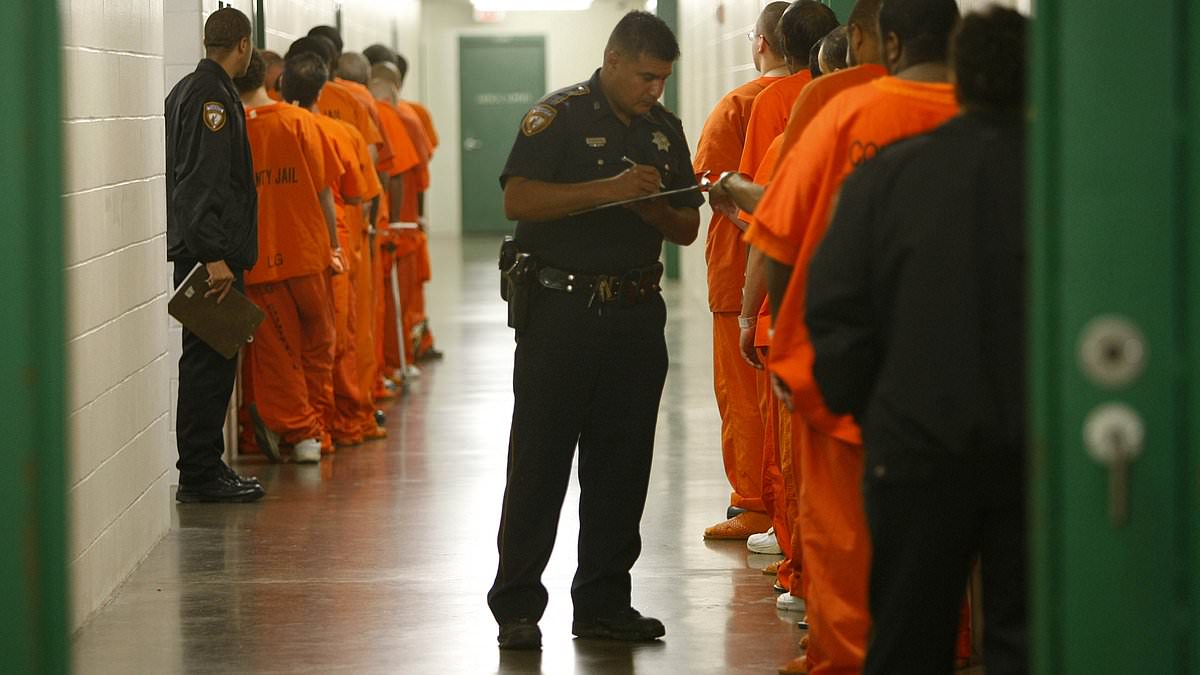The Labour Party is considering emulating a Texan-style prison system where inmates can reduce their jail time by earning points for good behaviour.
Earlier this month, Keir Starmer introduced an early release prison scheme in England and Wales – which recently wrongly freed 37 criminals – in a bid to tackle the over-crowding epidemic in British prisons.
Now, ministers are reportedly drawing up plans to build a points based system which aims at reducing re-offending in lieu of building more prisons.
Back in 2007, Texan prisons were similarly at full capacity, but an investment into educational and drug treatment programmes for prisoners saw the US state save $2 billion and decrease their prison population by 15 per cent from 2007 to 2023.
With Starmer clearly hoping to emulate this success, will such a change in initiative really work in the UK and what does a points-based system actually look like in reality?
As of April this year, it was recorded that there were 132,955 inmates in Texas prison facilities – the largest prison population of any US state – in comparison to England’s prison population of 88,521 this month.
According to the state’s Department of Criminal Justice, prisoners wake up at 3.30am and breakfast is served no earlier than 4am. They then then report to their work assignments at 6:00am.
Inmates in Texas are able to cut their jail time by earning points through participation in courses, which is known as ‘good conduct time’.
The courses include: Education workshops, industrial, agricultural, and vocational.
There are also classes aimed at tackling the root causes of their sentencing, such as drug use.
Investment has also been made in parenting courses and drug rehabilitation sessions.
The umbrella term for this is ‘smart sentencing’.
Rick Perry, the Republican governor in Texas in 2007 – when jails were at full capacity and 17,000 new beds were needed over five years – decided to focus on reducing re-offending instead of building more prisons.
Every prisoner who is physically able has a job in the prison system, but they are not paid. They can only earn privileges – such as watching television – as a result of good work habits.
Of the roughly 40,000 Texans released from state prisons every year, nearly half are rearrested within three years, and between 15-20% return to prison.
In England and Wales, reoffending former prisoners account for 80 per cent of all crime, at a cost to the economy of £18 billion a year, the Times reports.
The Texas Department of Criminal Justice also employs over 33,000 people, and for 2024 it has an $8.5 billion budget, making it one of the largest state agencies in Texas.
In comparison, the UK spent approximately £6.85billion on its prison system in 2023/24.
After reintroducing the death penalty in 1982, Texas has also executed more prisoners than any other US state, and currently has 180 prisoners on death row.
A total of 590 people have been killed by lethal injection in the state in the past 40 years.
Stacking each prison system up against each other, it is clear to see the differences in terms of their budget and the number of prisoners they have.
Another major point of difference is the way prisoners in Texas are able to shorten the time they serve behind bars by earning credit for good behaviour, which was first thought of by Rick Perry, the Republican governor at the time.
To do this, inmates can win points by participating in courses aimed at tackling the underlying causes as to why they are in prison, for example due to drug habits.
Named as ‘good conduct time’, prisoners can enroll in educational, industrial, agricultural, and vocational workshops, as well as sessions on drug rehabilitation and behavioural change.
The thought behind this is so inmates can use their time behind bars proactively before they are eligible for a parole review. The bonus of being able to reduce their sentence also boosts participation rates.
Hundreds of millions of dollars were also invested in schemes – like parenting courses – to prevent crimes being committed in the first place.
For those whose offending was linked with drug misuse, special drug courts were set up to order them to attend rehabilitation courses. Inmates need to carry out weekly court reports and urine tests to avoid prison time.
Non-custodial sentences are also given for low-level drug offences.
Last year, the prison population in Texas fell from 152,661 to 129,653, which meant authorities were able to shut 16 jails.
Crime rates also fell 29 per cent to their lowest level since 1968 and reoffending rates halved, while employments rates of ex-convicts increased by 50 per cent just ten years after the reforms.
A UK source previously said the Texas prison model would only be successful in the UK with considerable financial backing.
The source told The Times: ‘If there’s no additional money then this will be a totally cosmetic exercise.’
And with reports that the Treasury ahead of next month’s budget amid worries that the department may experience significant cuts instead of increased funding, there’s a real doubt as to whether the UK would be able to afford these changes.
This comes after dozens of offenders convicted of breaching a restraining order were wrongly let out of jail.
The Ministry of Justice is now striving to avoid more ineligible offenders being freed after the oversight emerged.
In all, 37 men were released in error. Most have now been recalled to jail but five were still on the loose last night.
Jails have been ordered to manually recalculate prisoners’ correct release dates after the shocking mix-up.
